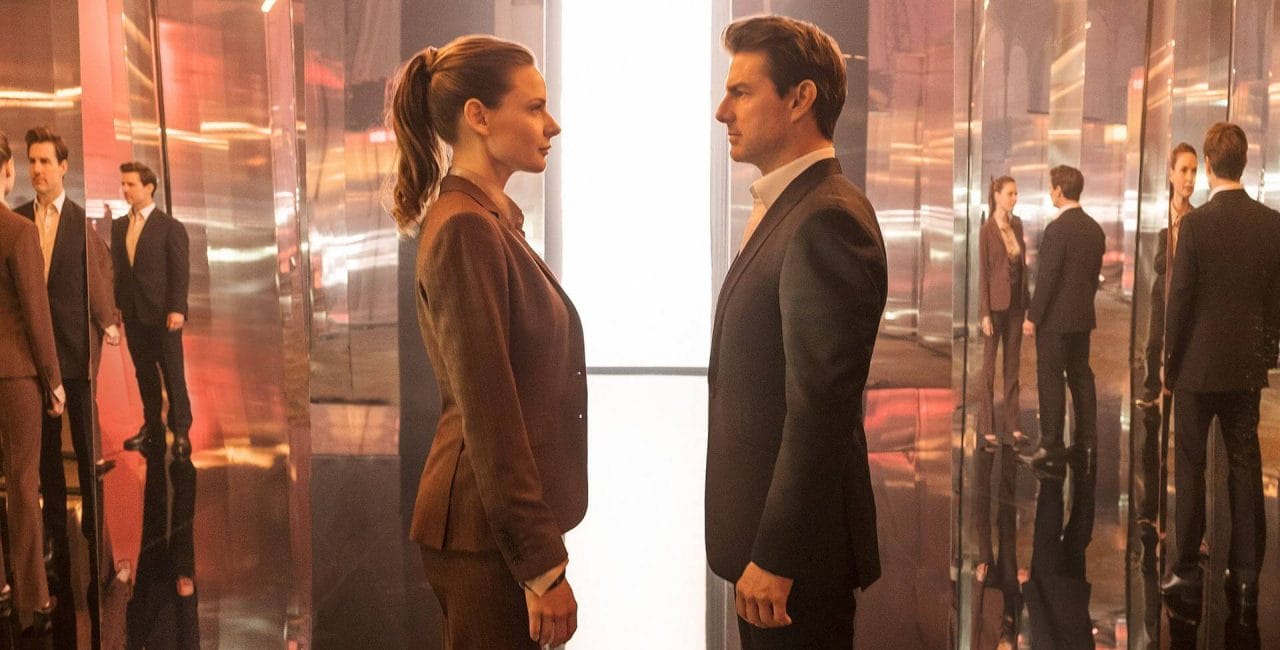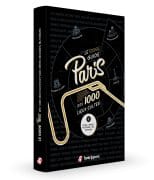Article
Mission Impossible Fallout: Behind the scenes of the biggest shoot ever in Paris with the French producer

Mission: Impossible – Fallout was even a trying shoot
Meeting with Raphaël Benoliel, co-founder of Firstep, a French production company, and Antonin Depardieu, a location scout in Paris. Both reveal the set-up, political complications and anecdotes from the filming of Mission: Impossible – Fallout, with a budget of $178 million.
Given the scope of Mission: Impossible – Fallout, what was your scope as executive producer?
Raphaël Benoliel: For this type of project, precisely action films where you have to achieve sequences never seen in previous opuses or with their counterparts such as James Bond and Jason Bourne, the production and the chief set designer work closely together. Christopher McQuarrie wanted from the start to anchor part of Mission: Impossible – Fallout in Paris. It was a socio-political message from him and Tom Cruise following the attacks of 13 November 2015. Antonin Depardieu, an expert in location scouting, and the American chief decorator went around the streets for weeks to find the locations, knowing that we didn’t have a script.
Beyond the desired strategic locations, Antonin’s role is also to make people discover less known places, such as the tunnel under the quai de la Râpée that leads to the Canal Saint-Martin. McQuarrie wanted the Arc de Triomphe; a wish of many directors but constantly refused. Our field of intervention is therefore to welcome them, to say “yes” to everything, but also to warn them that places will be impossible. The Arc de Triomphe and the overflight of Paris are a systematic “no”.
However, we knew that through this promising project in France, we were going to get more authorisations than other films. It is the result of a lot of work and the increase in the tax credit. However, Tom Cruise is not the guarantee of “yes”. This is where executive production comes in; we manufacture for Paramount. Nothing was easy, although in the end we had the full support of the Paris City Hall, the Police Prefecture, the Ministry of the Interior, the Ministry of Culture, the Ministry of the Armed Forces and Bercy.
You benefited from a €25 million budget, 36 days of filming, 5000 French technicians, 100 trucks to park and 250 people to block access to the Star Roundabout. Is it the first time you’ve monopolized so many places in Paris?
RB: I think, but I don’t know the whole history of cinema. on our scale, this is the first time. The red axes, i.e. axes that are totally forbidden for turning, such as the Arc de Triomphe, are a first in France.
What were these political problems?
RB: After the interministerial meeting in December 2016 at the Ministry of Culture, Mission Cinéma gave us the go on January 15 and we plan to shoot in April 2017. Four weeks before shooting, the assistant to the prefect calls us to announce that it will not be possible, stating a security problem. It is not normal to go back on a decision that has been granted. I didn’t accept it. Beyond a possible dispute between my company and Paramount, the prefect was above all going to break France’s openness to the international scene and its potential for influence. Hosting a film shoot or the Olympic Games is one of the major events that have a significant impact on a country’s economy.
The assistant to the prefect asked me to postpone, which is impossible when the dates are fixed; Mission: Impossible – Fallout was also shooting in other countries. Mission Cinema froze everything, no questions asked. I contacted the Ministry of Culture to act higher up. With hindsight, this is more of a political problem than a real problem; we were in the context of the presidential elections.
The Mayor of Paris is not liked and the prefect is not liked either. Since the French Revolution, these two entities have had more or less the same power. At the time, the mayor supported Benoît Hamon and the prefect, Emmanuel Macron. The mayor validated the reception of the film without referring to the prefect in an official way with a joint announcement published in the press. I think that’s why he objected to the filming. No one will ever say it, but I’m saying it, it’s my feeling.
How did you bounce back and get the final settlement?
RB: At the time, the Minister of the Interior defended the tax credit when he was president of the Socialist group in the National Assembly. He understood the obvious value of filming on this scale. He thus supported us to the point of contradicting his prefect, which he cannot do from a diplomatic point of view. This rejection letter was therefore not to be published. It soon became clear that it was a quarrel between the prefect and the mayor of Paris. It was a political game between the different ministries, the town hall and the prefecture. with 3 or 2 weeks to go before shooting, everyone had to be aware of the importance of this event. A meeting was scheduled to review the process; it was expected that not everything would be achieved. In reality, I was confident, even blindly confident.
In fact, I’ve never shared it with the American production. I wanted to avoid this bad image of France and manage to do what is impossible in other countries. It was important to succeed in this challenge or we were heading for an industrial disaster. We used our contacts and every possible means to make it all end in our favour. So I had listed the specific locations, including the Arc de Triomphe that McQuarrie wanted from the start, suspecting that this would be the first “no” that would fall.
Two days before the meeting, another hard blow. The presidential election and the PenelopeGate: the fictitious jobs scandal erupts. The then Minister of the Interior was accused of employing his daughter and had to resign. Together with the Minister of Culture, he was our second main support. Everything was coming at us. Fortunately, the meeting went surprisingly well. Everything was accepted, even the shot at the Arc de Triomphe; they fell in love with the idea of a shot “that would never be seen, that would be in the trailer and that would go around the world”. Today, the anecdote is funny because from a totally negative experience can emerge something highly positive.
What were the most intense action scenes in Mission: Impossible – Fallout to shoot?
RB: Everything has been intense. Flying over Paris, the helicopter on Bercy, a chase around the Arc de Triomphe, these are sequences that have never been done before. Streets and avenues were blocked off, significantly, every weekend for seven weeks. every time, we were doing something new. One of the complicated sets to set up happened in the Grand Palais because at the same time there was an attack on the Champs-Elysées where a policeman was killed. 800 extras were inside, with more than 400 technicians. We closed the doors and continued filming. Nobody knew about it because we didn’t want to create a panic.
Antonin Depardieu: Another challenge that Raphaël spoke to you about briefly earlier, the boat scene under the Quai de la Râpée tunnel to the Saint-Martin canal, which is almost 2 km long. It had to be lit with an eight-generator system. The maritime police entrusted us with speedboats because we don’t have such powerful boats for the Seine, it’s useless. They were brought in from Brittany. You should know that the English don’t have a boating license. In France, it’s mandatory.
It was necessary to request a prefectoral order to cut off maritime traffic on the Seine for almost 2 hours so that they could navigate before entering the canal. It’s the first time I’ve cut off traffic on the Seine. It’s also the first time we’ve had so many parking bumps. The Town Hall has inaugurated a municipal by-law to mention filming. Motorists who did not comply with the parking ban were required to impound their vehicles and pay a fine. It was a first in Paris. There have been many complaints when we had nothing to do with it.
AD: After spending two months with the head decorator to select the locations, I managed all the Parisian technical and artistic teams and supervised the suppliers. In total, there are a dozen major emblematic places in Paris, such as the Esplanade du Trocadero. The chase between Tom Cruise on his motorbike, which does its own stunts, and an armoured truck necessitated the closure of the Arc de Triomphe and the Avenue de l’Opéra which leads to the Opéra Garnier. We shot it very quickly between 6 and 8 o’clock, with 5 cameras, 60 stuntmen on wheels.
We then moved on to the Opera House because we had permission to cut off traffic between 8am and 2pm. Among the anecdotes, there was notably that of the Constitutional Council at the Palais-Royal. We wanted to shoot in one of the corridors of the Palais-Royal garden, on the constitutional side, but the employees did not want to be disturbed by the motorcycle sequence. This shoot was supposed to last an hour and a half, tops. We were forced to turn in the corridor, on the Ministry of Culture side. It’s French, all right. The anecdote of the Comédie-Française is mind-boggling. Tom Cruise wanted to add a plan to this place, still on the constitutional side, because he thought Buren’s columns were pretty. The Secretary General of the Comédie-Française has given his approval… for €20,000. The shooting of this scene lasted only one hour and we were on the public highway but Tom Cruise was quickly passing in front of the institution.
Article written by Nathalie Dassa.
Photo credit: Paramount.
The Fantrippers Buying Board

The Paris guide to the 1000 cult places of films, series, music, comics and novels
The coolest guide in Paris!
The café of Amélie, the mansion of Untouchables, the jazz club of the finale of La La Land, the Hôtel du Nord of the mythical replica of Arletty “Atmosphere”, the cinema of A bout de souffle, the restaurant of Ratatouille, the quays of the Seine of Midnight in Paris, the secret places of the Da Vinci Code, the grocery store of January in La Traversée de Paris , the Bridge of Inception and Peur sur la ville, the addresses of the spectacular scenes of Mission Impossible 6, but also series Call my agent, Gears, Le Bureau des légendes, Sense8, Sex and The City, Gossip Girl…
Etienne Daho’s Café de Flore, Jay-Z and Kanye West’s hotel in Nas in Paris, Serge Gainsbourg’s Poinçonneur des Lilas metro station, Serge Reggiani and Marc Lavoine’s Mirabeau Bridge, Mc Solaar’s Lyon station…
The places evoked in the comics Adèle Blanc-Sec, Largo Winch, Blake and Mortimer, Michel Vaillant…
But also in the novels of Ernest Hemingway, Victor Hugo, Leo Malet, Daniel Pennac, Marc Levy, Guillaume Musso… you’ll find all the must-see places of Parisian Pop Culture in this new guide.
Content quality
Interest for fans
Value for money
By Fantrippers Rédaction
Composée de journalistes et d'experts de la pop culture, l'équipe de Fantrippers vous emmène sur les traces de vos héros et héroïnes préféré.e.s à travers les articles du site et les différentes publications à retrouver sur shop.fantrippers.com !







